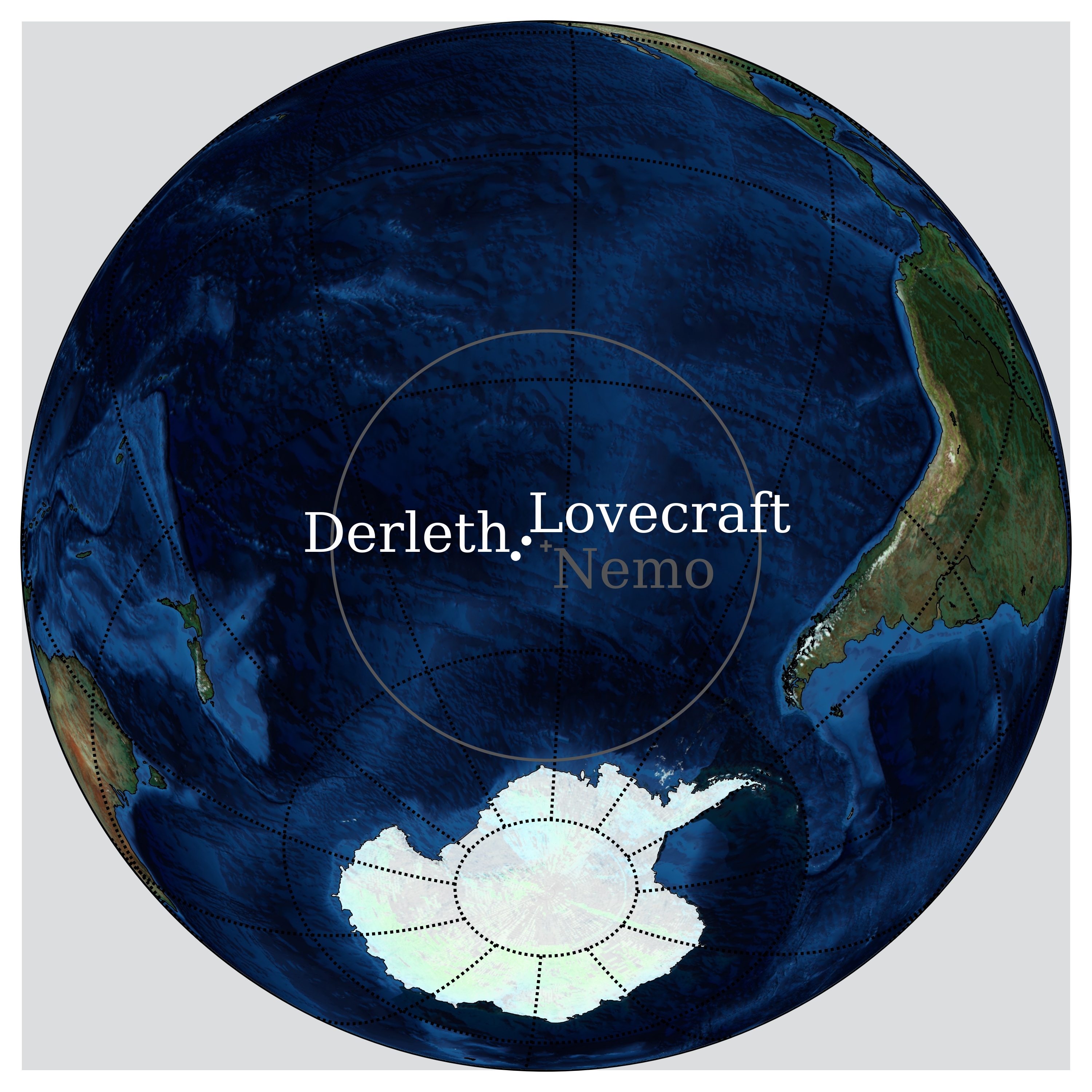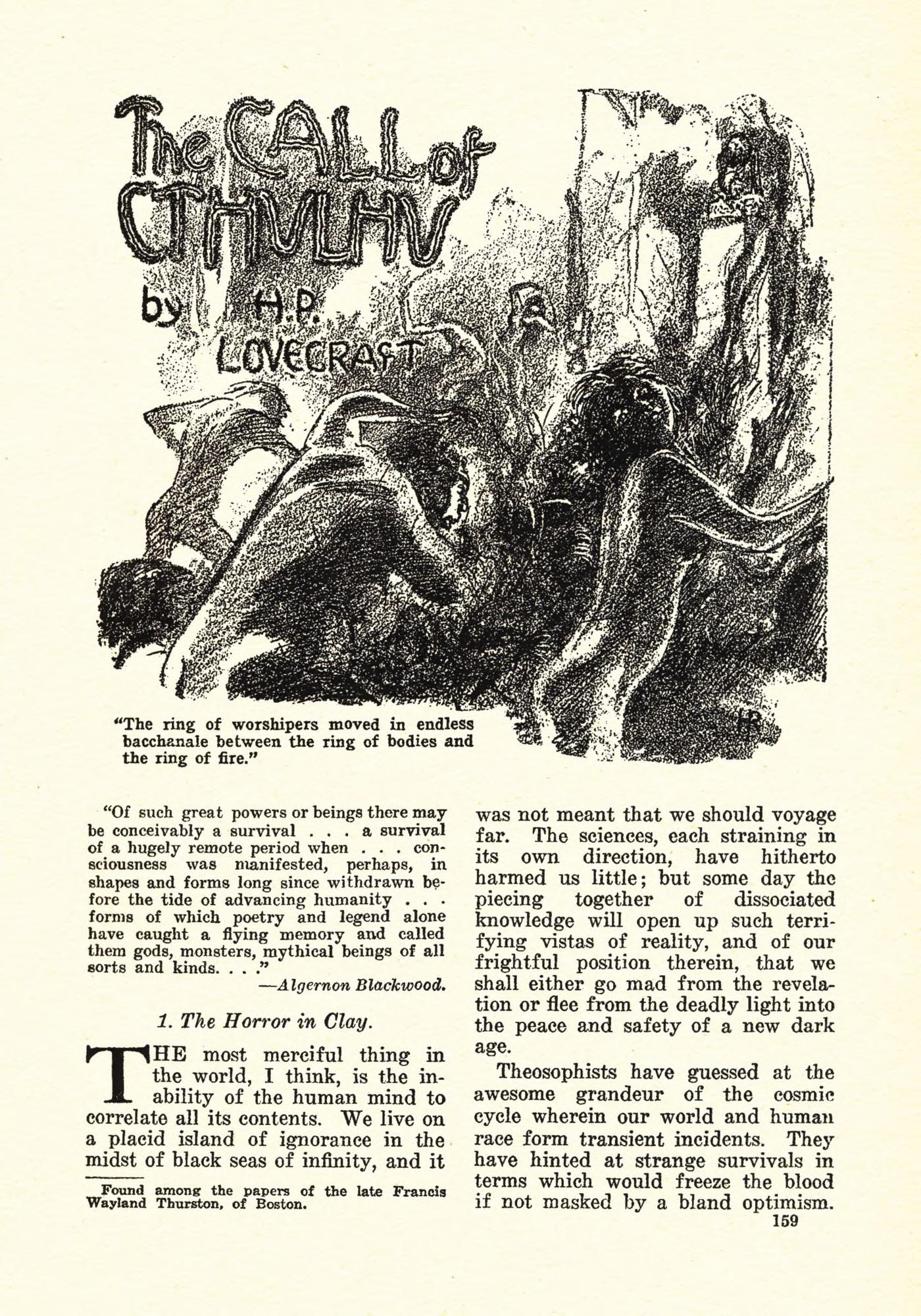|
Cthulhu Regio
Cthulhu Macula (formerly ''Cthulhu Regio'') is a prominent surface feature of the dwarf planet Pluto, that is reminiscent of a whale in shape. It is an elongated dark region along Pluto's equator, long and one of the darkest features on Pluto. It is west of the Sputnik Planitia region of Tombaugh Regio, also known as Pluto's "heart", and to the east of Meng-P'o, the easternmost of Pluto's "Brass Knuckles". Description The dark color of the region is speculated to be the result of a "tar" made of complex hydrocarbons called tholins covering the surface, which form from methane and nitrogen in the atmosphere interacting with ultraviolet light and cosmic rays. Tholins have been observed on other planetary bodies, such as Iapetus, Umbriel, and in the atmosphere of Titan, although the irregular and disconnected nature of the dark spots on Pluto has not yet been explained. The presence of craters within Cthulhu indicates that it is perhaps billions of years old, in contrast to the ... [...More Info...] [...Related Items...] OR: [Wikipedia] [Google] [Baidu] |
Umbriel (moon)
Umbriel is a moon of Uranus discovered on October 24, 1851, by William Lassell. It was discovered at the same time as Ariel and named after a character in Alexander Pope's 1712 poem ''The Rape of the Lock''. Umbriel consists mainly of ice with a substantial fraction of rock, and may be differentiated into a rocky core and an icy mantle. The surface is the darkest among Uranian moons, and appears to have been shaped primarily by impacts. However, the presence of canyons suggests early endogenic processes, and the moon may have undergone an early endogenically driven resurfacing event that obliterated its older surface. Covered by numerous impact craters reaching in diameter, Umbriel is the second most heavily cratered satellite of Uranus after Oberon. The most prominent surface feature is a ring of bright material on the floor of Wunda crater. This moon, like all moons of Uranus, probably formed from an accretion disk that surrounded the planet just after its formation. Th ... [...More Info...] [...Related Items...] OR: [Wikipedia] [Google] [Baidu] |
Oort (crater)
This is a list of named geological features on Pluto, identified by scientists working with data from the ''New Horizons'' spacecraft. The International Astronomical Union (IAU) officially approved the first 14 names on 8 August 2017 (announced 7 September 2017), with additional names following in each subsequent year, but many of the names listed on this page are still informal. The IAU has determined that names will be chosen from the following themes: * Names for the underworld from the world's mythologies * Gods, goddesses, and dwarfs associated with the underworld * Heroes and other explorers of the underworld * Writers associated with Pluto and the Kuiper belt * Pioneering space missions and spacecraft * Scientists and engineers associated with Pluto and the Kuiper belt Cavi A cavus is a hollow or steep-sided depression. The following is a list of official and unofficial names chosen by the ''New Horizons'' team. Colles A collis is a low hill. Plutonian colles are ... [...More Info...] [...Related Items...] OR: [Wikipedia] [Google] [Baidu] |
Regio (astronomy)
Planetary geology, alternatively known as astrogeology or exogeology, is a planetary science discipline concerned with the geology of the celestial bodies such as the planets and their moons, asteroids, comets, and meteorites. Although the geo- prefix typically indicates topics of or relating to Earth, planetary geology is named as such for historical and convenience reasons; due to the types of investigations involved, it is closely linked with Earth-based geology. These investigations are centered around the composition, structure, processes, and history of a planet. Planetary geology includes such topics as determining the properties and processes of the internal structure of the terrestrial planets, and also looks at planetary volcanism and surface processes such as impact craters, fluvial and aeolian processes. The structures and compositions of the giant planets and their moons are also examined, as is the make-up of the minor bodies of the Solar System, such as asteroids ... [...More Info...] [...Related Items...] OR: [Wikipedia] [Google] [Baidu] |
Yuggoth
''The Whisperer in Darkness'' is a 26,000-word novella by American writer H. P. Lovecraft. Written February–September 1930, it was first published in ''Weird Tales'', August 1931. Similar to ''The Colour Out of Space'' (1927), it is a blend of horror and science fiction. Although it makes numerous references to the Cthulhu Mythos, the story is not a central part of the mythos, but reflects a shift in Lovecraft's writing at this time towards science fiction. The story also introduces the Mi-Go, an extraterrestrial race of fungoid creatures. Plot The story is told by Albert N. Wilmarth, an instructor of literature at Miskatonic University in Arkham, Massachusetts. When local newspapers report strange things seen floating in rivers during a historic flood in Vermont, Wilmarth becomes embroiled in a controversy regarding the reality and significance of the sightings. He sides with the skeptics, blaming old legends about monsters living in uninhabited hills that abduct people ve ... [...More Info...] [...Related Items...] OR: [Wikipedia] [Google] [Baidu] |
South Pacific Ocean
South is one of the cardinal directions or compass points. The direction is the opposite of north and is perpendicular to both east and west. Etymology The word ''south'' comes from Old English ''sūþ'', from earlier Proto-Germanic ''*sunþaz'' ("south"), possibly related to the same Proto-Indo-European root that the word ''sun'' derived from. Some languages describe south in the same way, from the fact that it is the direction of the sun at noon (in the Northern Hemisphere), like Latin meridies 'noon, south' (from medius 'middle' + dies 'day', cf English meridional), while others describe south as the right-hand side of the rising sun, like Biblical Hebrew תֵּימָן teiman 'south' from יָמִין yamin 'right', Aramaic תַּימנַא taymna from יָמִין yamin 'right' and Syriac ܬܰܝܡܢܳܐ taymna from ܝܰܡܝܺܢܳܐ yamina (hence the name of Yemen, the land to the south/right of the Levant). Navigation By convention, the ''bottom or down-facing side'' of ... [...More Info...] [...Related Items...] OR: [Wikipedia] [Google] [Baidu] |
R'lyeh
R'lyeh is a fictional lost city that was first mentioned in the H. P. Lovecraft short story "The Call of Cthulhu", first published in ''Weird Tales'' in February 1928. R'lyeh is a sunken city in the South Pacific and the prison of the entity called Cthulhu. Description Norwegian sailor Gustaf Johansen, the narrator of one of the tales in the short story, describes the accidental discovery of the city: "a coast-line of mingled mud, ooze, and weedy Cyclopean masonry which can be nothing less than the tangible substance of earth's supreme terror—the nightmare corpse-city of R'lyeh...loathsomely redolent of spheres and dimensions apart from ours".H. P. Lovecraft, "The Call of Cthulhu" (1928) The short story also asserts the premise that while currently trapped in R'lyeh, Cthulhu will eventually return, with worshipers often repeating the phrase ''Ph'nglui mglw'nafh Cthulhu R'lyeh wgah'nagl fhtagn'': "In his house at R'lyeh, dead Cthulhu waits dreaming". Lovecraft claims R'lyeh ... [...More Info...] [...Related Items...] OR: [Wikipedia] [Google] [Baidu] |
The Call Of Cthulhu
"The Call of Cthulhu" is a short story by American writer H. P. Lovecraft. Written in the summer of 1926, it was first published in the pulp magazine ''Weird Tales'' in February 1928. Inspiration The first seed of the story's first chapter ''The Horror in Clay'' came from one of Lovecraft's own dreams he had in 1919, which he described briefly in two different letters sent to his friend Rheinhart Kleiner on May 21 and December 14, 1920. In the dream, Lovecraft is visiting an antiquity museum in Providence, attempting to convince the aged curator there to buy an odd bas-relief Lovecraft himself had sculpted. The curator initially scoffs at him for trying to sell something recently made to a museum of antique objects. Lovecraft then remembers himself answering the curator with the response This can be compared to what the character of Henry Anthony Wilcox tells the main character's uncle while showing him his sculpted bas-relief for help in reading hieroglyphs on it which came ... [...More Info...] [...Related Items...] OR: [Wikipedia] [Google] [Baidu] |
New Horizons
''New Horizons'' is an interplanetary space probe that was launched as a part of NASA's New Frontiers program. Engineered by the Johns Hopkins University Applied Physics Laboratory (APL) and the Southwest Research Institute (SwRI), with a team led by Alan Stern, the spacecraft was launched in 2006 with the primary mission to perform a flyby study of the Pluto system in 2015, and a secondary mission to fly by and study one or more other Kuiper belt objects (KBOs) in the decade to follow, which became a mission to 486958 Arrokoth. It is the fifth space probe to achieve the escape velocity needed to leave the Solar System. On January 19, 2006, ''New Horizons'' was launched from Cape Canaveral Space Force Station by an Atlas V rocket directly into an Earth-and-solar escape trajectory with a speed of about . It was the fastest (average speed with respect to Earth) man-made object ever launched from Earth. It is not the fastest speed recorded for a spacecraft, which as of 2021 ... [...More Info...] [...Related Items...] OR: [Wikipedia] [Google] [Baidu] |
Hillary Montes
The Hillary Montes or (less officially, Hillary Mountains) are mountains that reach above the surface of the dwarf planet Pluto. They are located northwest of Tenzing Montes in the southwest border area of Sputnik Planitia in the south of Tombaugh Regio (or the part of Tombaugh Regio south of the equator). The Hillary Montes were first viewed by the ''New Horizons'' spacecraft on 14 July 2015, and announced by NASA on 24 July 2015. Naming The mountains are named after Sir Edmund Hillary, New Zealand mountaineer, who, along with Nepalese Sherpa mountaineer, Tenzing Norgay, were the first climbers to reach the summit of the highest peak on Earth, Mount Everest, on 29 May 1953. On 7 September 2017, the name ''Hillary Montes'' was officially approved together with the names of Tombaugh Regio and twelve other nearby surface features. Relative size The Hillary Montes rise to high from base to peak, about half as high as the Tenzing Montes. The Hillary Montes are similar in heigh ... [...More Info...] [...Related Items...] OR: [Wikipedia] [Google] [Baidu] |







